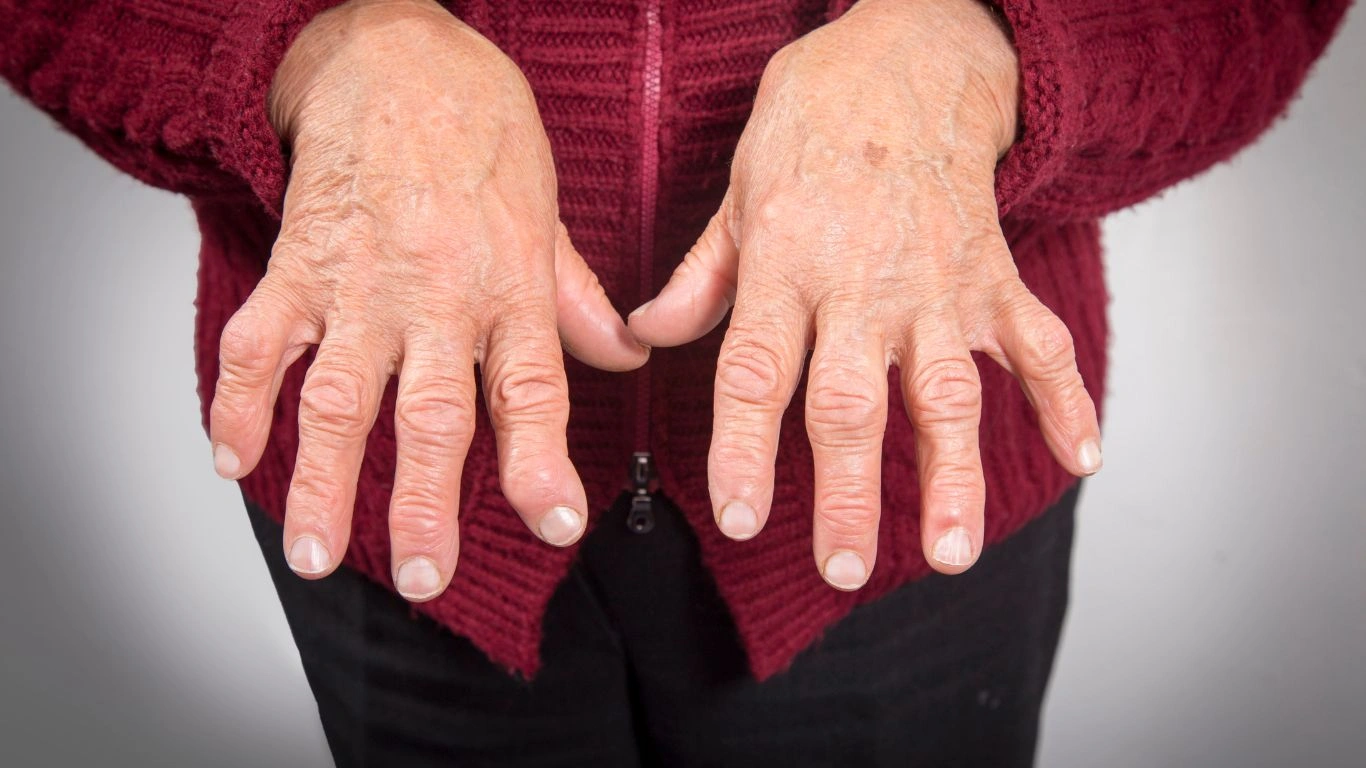Can Rheumatoid Arthritis Cause Joint Instability? 🤔💪
If you or someone you know has rheumatoid arthritis (RA), you might have noticed that, aside from the usual pain, swelling, and stiffness, something else seems off—like your joints are suddenly a bit unstable. It’s not just in your head—RA can actually cause joint instability, and it can make everyday activities feel like a real challenge. Let’s break down what’s going on, why it happens, and what you can do about it.
What’s Up with Rheumatoid Arthritis and Joint Instability?

So, What is RA, Anyway? 🧠
Rheumatoid arthritis is an autoimmune condition where your immune system gets confused and starts attacking the lining of your joints. Sounds pretty wild, right? But this attack causes inflammation, pain, and swelling, and over time, it can mess with the cartilage and ligaments that keep your joints stable.
You might think of RA just as the thing that makes your joints hurt, but it can also weaken those joints enough that they become unstable. So, it’s not just about being stiff in the mornings or dealing with pain—you could also feel like your joints are giving way under you, especially if RA’s been around for a while.
Why Does This Happen? 🤷♀️
Okay, so why exactly does RA mess with your joint stability? Well, when the inflammation from RA sticks around for a long time, it starts to damage more than just the lining of your joints. It can mess with the ligaments and tendons (the stuff that helps hold everything in place) and the cartilage (the cushion between bones). The more it damages these, the more unstable your joint becomes. Imagine trying to keep a door on its hinges if the screws were loose—that’s what it’s like for your joints when RA causes instability.
Troubleshooting Common Issues

Struggling to Walk or Stand? 🚶♂️
If your knees, hips, or ankles feel wobbly or like they might give out when you try to walk, you’re not imagining it. Joint instability can mess with your balance, making even simple stuff like standing or walking harder. A couple of things you can do to make it easier on yourself:
- Grab a cane or walker: It’s not just for old people! If you need support, using a cane or walker can help you move with more confidence and take some strain off your joints.
- Strengthen your muscles: It might sound like a lot of work, but strengthening the muscles around your unstable joints can actually help them feel more stable and give you more control over movement.
Dealing with Pain and Swelling? 🌡️
Pain and swelling are pretty common with RA, and when you add instability to the mix, it can be overwhelming. Here’s what might help ease some of that:
- Anti-inflammatory meds: These can help reduce swelling and manage pain, making it easier to move around.
- Heat and cold therapy: Switching between hot and cold packs can soothe inflammation and help with pain relief. Plus, it feels pretty nice.
Feeling Stiff and Losing Range of Motion? 🔒
RA can make your joints feel stiff, and if that’s paired with instability, it’s a double whammy. It’s tough to move if everything feels locked up. But there are ways to keep your joints from getting too stiff:
- Physical therapy: I can’t recommend this enough. A good physical therapist can show you specific exercises that will help keep your joints moving and prevent them from freezing up.
- Stretching: It might sound simple, but just stretching regularly can keep you flexible and prevent that “locked up” feeling.
Success Stories: Real People, Real Progress

Sarah’s Story: Regaining Stability 💪
Let’s talk about Sarah for a sec—she’s 45, and she’s been living with RA for years. Her knees and ankles were giving her a lot of trouble, and she often felt like her joints were about to collapse when she tried walking. But Sarah didn’t just sit back and wait for things to get worse. With the help of her doctor and physical therapist, she got on a plan that included medications, exercises, and even some joint protection strategies (like using a cane for balance).
After a few months, Sarah felt a huge difference. She could walk without fearing her knees would buckle, and her joint instability had improved so much. It’s a reminder that with the right treatment, you don’t have to let RA completely take over your life.
Mark’s Success: Surgery for Severe Instability 🏥
Now, let’s talk about Mark. He’s in his late 50s and has had RA for over 20 years. Over time, his joints, especially his wrists and shoulders, became so unstable that he couldn’t do simple tasks like lifting his groceries without pain. After trying meds and therapy with little improvement, Mark and his doctor decided surgery was the next step. He underwent joint replacement surgery, and it made a world of difference. Today, he can lift and move without worrying about instability.
His story shows that sometimes, when all other options are exhausted, surgery can be a game-changer, and it’s important to keep that in mind if things get really tough.
Key Takeaways

- Yes, rheumatoid arthritis can absolutely cause joint instability. The inflammation from RA can weaken ligaments, tendons, and cartilage, which leads to less stable joints.
- Don’t ignore joint instability! Early treatment is key. Whether it’s medication, physical therapy, or even assistive devices like canes, the earlier you start addressing the issue, the better.
- Joint replacement surgery is an option if things get really bad, but there are plenty of non-surgical steps you can take to improve your symptoms, too.
Frequently Asked Questions (FAQs)
Can RA cause joint instability in all joints?
Not necessarily. RA tends to affect joints in the hands, wrists, knees, and feet, but it can cause instability in any joint, depending on the severity of the disease.
How do I prevent joint instability with RA?
The best prevention is early treatment. Managing inflammation with medications, doing regular exercises to strengthen muscles, and using supportive devices can go a long way in preventing joint instability.
When should I consider surgery for joint instability?
Surgery is usually considered when your joints are severely damaged and nothing else seems to help. If you can’t do everyday tasks without pain or instability, it might be time to talk to your doctor about surgical options.
References
- American College of Rheumatology
- National Institute of Arthritis and Musculoskeletal and Skin Diseases
- Rheumatoid Arthritis Research Alliance
Disclaimer
This post is not a replacement for medical advice. If you’re dealing with RA, it’s important to talk to your healthcare provider to get a treatment plan that works for you.
Call to Action
If you or someone you care about is dealing with joint instability from rheumatoid arthritis, it’s time to take action. Reach out to a doctor or rheumatologist who can help guide you through the next steps. And hey, share this article with others who might find it useful—let’s keep the conversation going and help each other out!

Tarra Nugroho is a dedicated Nurse Practitioner with a strong foundation in family and preventive care. She brings both compassion and clinical expertise to her practice, focusing on patient-centered care and health education. As a contributor to Healthusias.com, Tarra translates medical knowledge into clear, empowering articles on topics like women’s health, chronic disease management, and lifestyle medicine. Her mission is simple: help people feel seen, heard, and informed—both in the clinic and through the content she creates. When she’s not caring for patients, Tarra enjoys weekend hikes, plant-based cooking, and curling up with a good health podcast.






